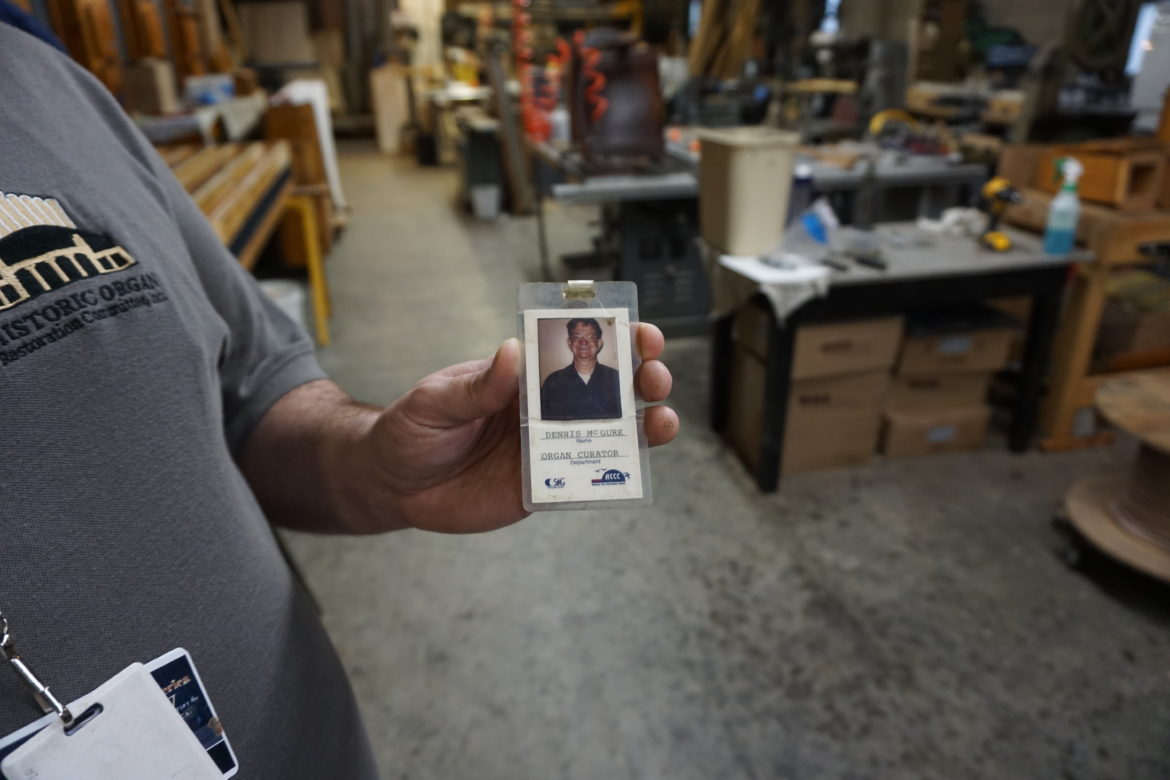Last Monday Nathan Bryson, who is the Curator of Organs at Boardwalk Hall in Atlantic City, was surveying a damaged section of the 85-year-old pipe organ in the main auditorium when he noticed an object at the bottom of one of the pipes, Major Diapason, Pedal Left division.
The Major Diapason is one of the more powerful ranks (I’m told they’re called) in what is almost certainly the largest pipe organ—and arguably the loudest musical instrument—in the world. Scott Banks, who heads fundraising for the committee restoring the organ, calls the section “very potent,” meaning a lot of air pressure builds up, some of which had cracked the wind chest.
From his perch atop the pipe, Bryson called down to a colleague who reached into the mouth. In it, he found the ID badge of Dennis McGurk, who had been Curator of the Boardwalk Hall pipe organ from 1984 to 1998.
McGurk, who died this past February, was the third curator of the Boardwalk Hall organ, which has 33,112 pipes (officially) and needs more or less constant maintenance. Bryson and co. are a few years into a planned $16 million restoration, expected to wrap up sometime this decade (it’s hard to say when exactly). Scott Banks likened restoring the organ to painting the George Washington Bridge. By the time you finish, you have to start over again.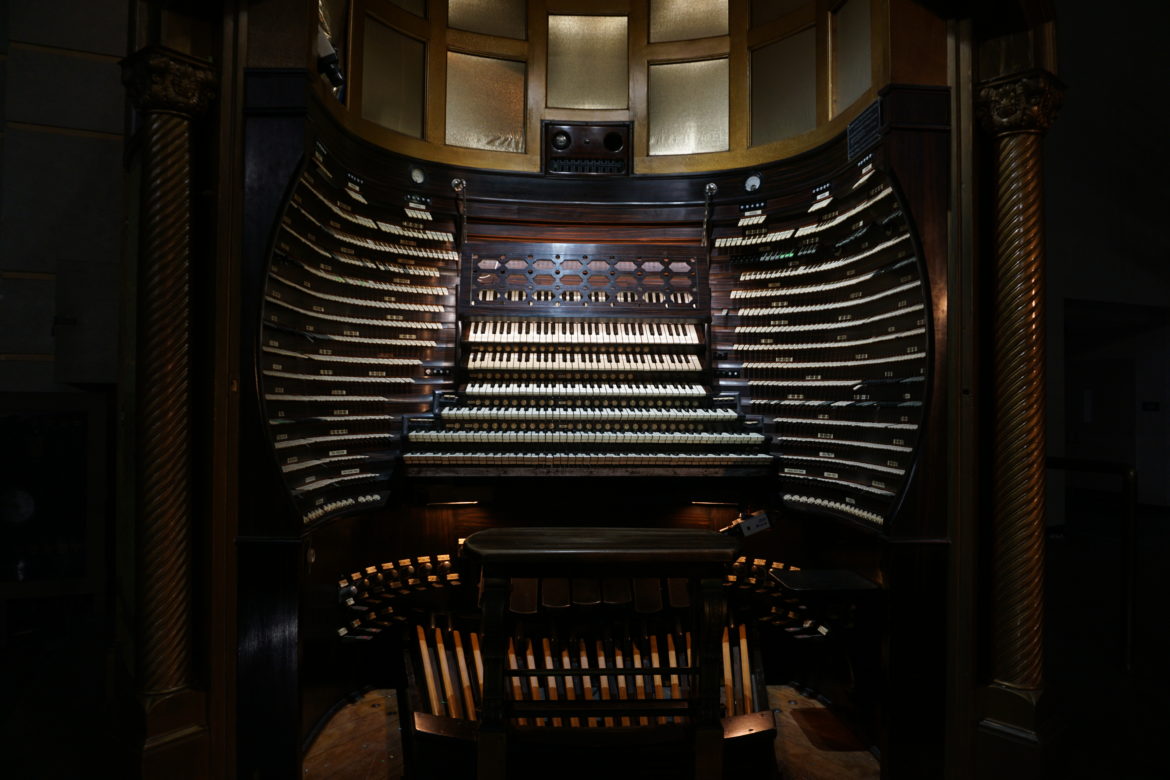
Unlike other curators, McGurk had been a local guy, rather than an eminent musical transplant. He was born in Atlantic City, the eighth of nine children, according to his obituary. Growing up, he described himself as a “fix-it kid.” His parents owned a tavern in the city (I don’t know which one). He said he’d tried to play the organ once, but the nuns had scared him off.
After graduating from Holy Spirit, he did a stint in the army, then worked as a gardener and plumber before picking up part-time work at Boardwalk Hall (then known as Convention Hall) where word got around that he was a good all-purpose mechanic, and he was eventually hired on as an assistant to the second Curator of Organs, William Rosser. After a ten-year hiatus (he ran a gardening business) he took over as curator himself.
There are 33,112 pipes, officially, in the Boardwalk Hall organ but even that has been somewhat controversial. Some of the pipes are fractions of an inch long. One pipe is the heaviest metal organ pipe in the world (it weighs 2,300 lbs). Another pipe is 64-feet long, one of two such pipes (“true 64-footers,” Banks called them) in the world (the other is in Australia).
From the floor of the auditorium in Boardwalk Hall, it’s hard to grasp the scale of the organ. Apart from the console (a little Wizard of Ozish chamber where the organist sits) you can’t really see the instrument, much of which is hidden behind the walls.
One pipe is 59-feet long and produces a vibration of 8hz per second, below the threshold of human hearing. Stephen D. Smith (a historian who wrote about the organ) said 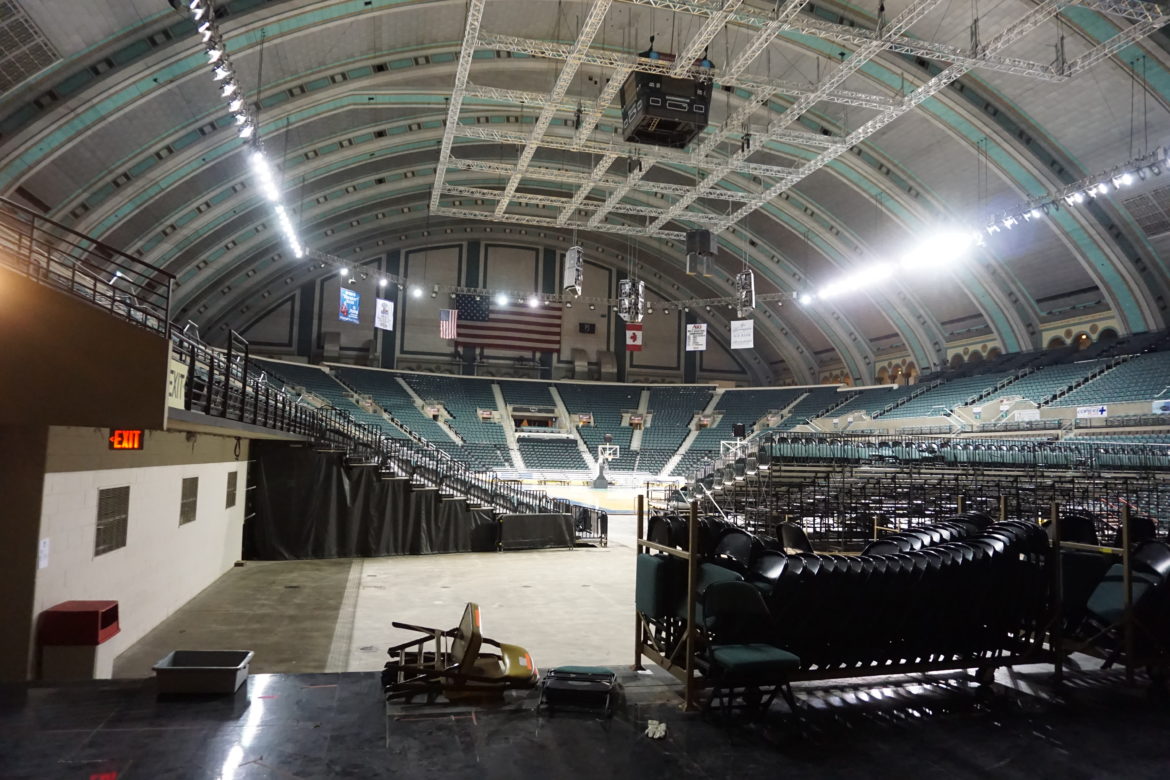
Nathan Bryson told me that, unlike the world’s other gargantuan pipe organs, which tended to grow by accretion, expanding as they were added to over time, the Atlantic City organ was built as-is, a cohesive whole, designed from the get-go to be the largest organ in the world.
“Basically, from Pacific Avenue halfway through this building, there is something organ-related behind every wall,” Scott Banks said. “It’s just that encompassing.”
Bryson, who built organs in North Carolina before moving to Atlantic City, described the job of restoration as a mix of woodwork, metalwork and electrical work. McGurk, when he had the job, added leatherwork too, since he had to cut and stitch the material used to stop the valves.
I assumed (incorrectly it turned out) corrosion would be a problem, since the organ sits on the beach essentially, but Scott Banks said the salt air is less problematic than the founders imagined when they required all fittings to be made of brass. In the winter they actually need to pump humidity into the space, he said. But there are other challenges unique to working in Atlantic City. Unlike a church organ, for example, or one on a college campus, the Boardwalk Hall organ speaks into an auditorium that is used for ice hockey games, basketball games, concerts, political rallies. Etc.
Apparently you can’t cover the largest pipe organ in the world with a tarp (as someone suggested) when the finals of the American Professional Rodeo Association are held a few feet away, as they were in November, when the rodeo dust had to be cleaned off the console before the Wednesday recital.
“Unfortunately the layout of the pipework inside the chambers prevents any sort of curtain on the inside of the grilles,” the restorers wrote.
“We do put large fans in the chamber doors to keep positive airflow going out and it is quite effective at keeping the dust out!”
Nobody really knows the last time the organ was played at anything like its full capacity. It was badly damaged in the 1944 Hurricane, but McGurk told the Times that when he started as Rossner’s assistant in 1959, “pretty much all of the organ was working.”
Bryson and Banks said they know it was played during the 1964 Democratic National Convention. Around the same time, air conditioning was installed in the hall, and a leaking condensation unit caused further damage. “Things started to decline rapidly after that,” Bryson said.
When Bryson first saw the organ in 2007, it was not playable, he said. By September 2015, when he became curator, it was operating at a little less than 25%. Now it’s a little more than 50%, he estimated.
“I tell people it’s kind of like half of your symphony players are out on strike,” he said. “Most people would never even know that only half the organ is playing, because it’s still an incredible and thrilling sound.”
The Historic Organ Restoration Committee is trying to raise $12,000 to fund a recording of the organ. The last time a double-recording was done was in 1955. A recording was done in 1998, but at the time only one chamber was working and only part of that.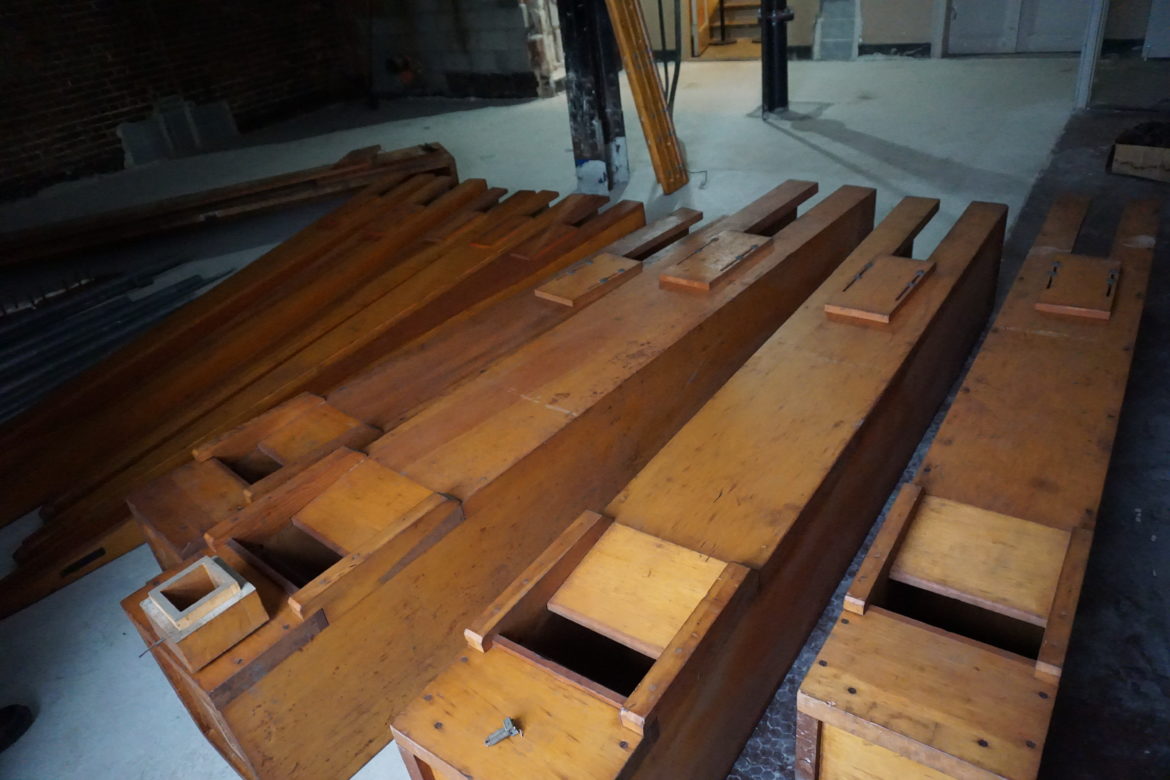
Banks said miking the organ presents a technical challenge, since some ranks produce sounds at 138 decibels, just below the level at which your nosehairs start to vibrate. The dynamic range—a measure of the distance between the largest and smallest sounds the instrument makes—is likewise ginormous. On top of that, you can fly a helicopter inside the auditorium at Boardwalk Hall.
In 1998, as he was getting set to retire from the field, McGurk gave a valedictory interview to the New York Times where he warned his successors about the difficulties they faced in the job. The New Jersey Exposition and Sporting Authority had allocated $78 million to renovate Convention Hall but none to preserve the organ, effectively marking the end of McGurk’s tenure.
At the start, the job entailed sometimes chauffeuring around Emerson Richards, the state senator whose brainchild the organ had originally been. Toward the end of Rosser’s tenure, when Rosser was sick, McGurk had had to carry him around the building. McGurk had never done an organ apprenticeship and was not really even an organ enthusiast, in one history, but he knew more about the instrument than anyone.
By that point he was deaf in one ear (from the organ) and had sat through so many performances of Bach’s Toccata and Fugue in D Minor that it made him physically ill, he said. But he seemed to despair that the organ would ever be up again and running at full capacity.
“They don’t have any idea how complicated this instrument is, how many things can go wrong,” he reportedly said. “If one pigeon gets in, you don’t want to know what can happen.”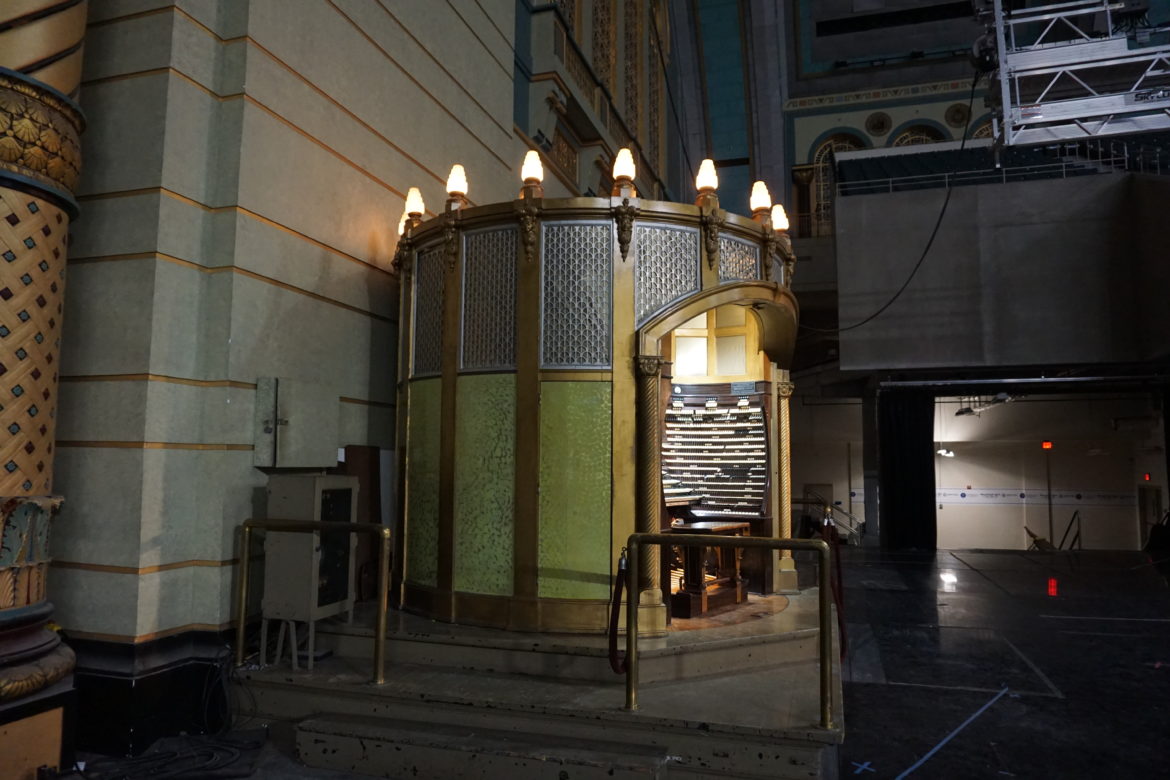
In 1999, the Convention Hall Organ Society commissioned a report on the organ by Jack Bethard and Douglass Hunt, who was curator of the organ at the Church of St. John the Divine in New York City. It estimated the value of the organ at $60 million, saying it would take at least $9 million to make it fully playable again.
McGurk had said five full-time technicians were needed to run the organ.
At present there are five full-time workers in the shop behind the organ, not counting Scott Banks who does fund raising and gives the tours. Counting volunteers there are six to ten people at work on any given day.
It took four years to build, Banks said. “But they had sixty people working on it, six days a week.”
Was there any chance Dennis McGurk had dropped his badge into a pipe on purpose, as a parting gift?
The restorers don’t think so.
There was a ladder nearby and he was probably climbing it when it was clipped to his pocket and flipped off.
It’s 20 years ago this month that he retired. It was pure luck it was found.
They’re going to put the ID in their museum.

